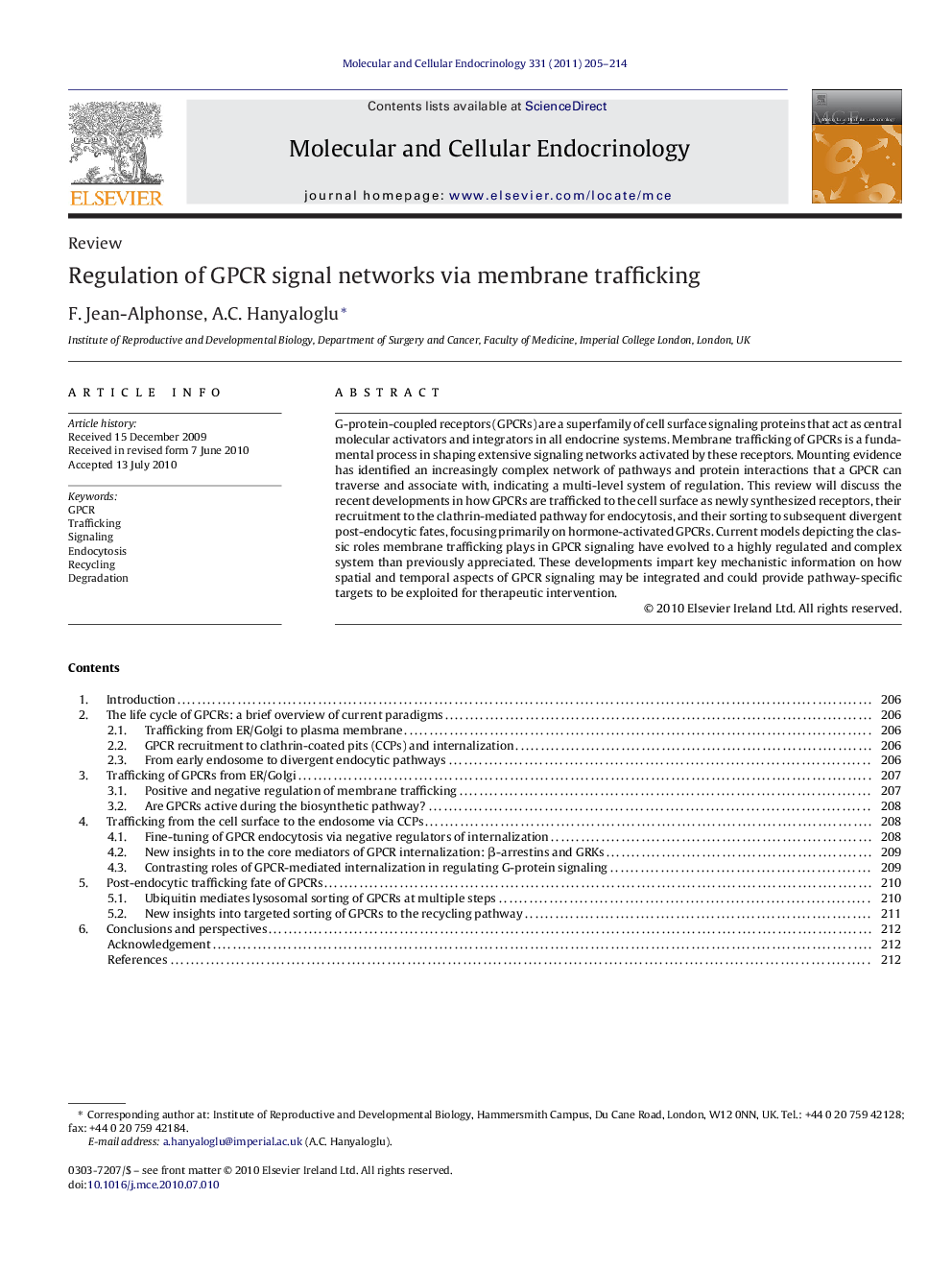| Article ID | Journal | Published Year | Pages | File Type |
|---|---|---|---|---|
| 10956353 | Molecular and Cellular Endocrinology | 2011 | 10 Pages |
Abstract
G-protein-coupled receptors (GPCRs) are a superfamily of cell surface signaling proteins that act as central molecular activators and integrators in all endocrine systems. Membrane trafficking of GPCRs is a fundamental process in shaping extensive signaling networks activated by these receptors. Mounting evidence has identified an increasingly complex network of pathways and protein interactions that a GPCR can traverse and associate with, indicating a multi-level system of regulation. This review will discuss the recent developments in how GPCRs are trafficked to the cell surface as newly synthesized receptors, their recruitment to the clathrin-mediated pathway for endocytosis, and their sorting to subsequent divergent post-endocytic fates, focusing primarily on hormone-activated GPCRs. Current models depicting the classic roles membrane trafficking plays in GPCR signaling have evolved to a highly regulated and complex system than previously appreciated. These developments impart key mechanistic information on how spatial and temporal aspects of GPCR signaling may be integrated and could provide pathway-specific targets to be exploited for therapeutic intervention.
Related Topics
Life Sciences
Biochemistry, Genetics and Molecular Biology
Cell Biology
Authors
F. Jean-Alphonse, A.C. Hanyaloglu,
